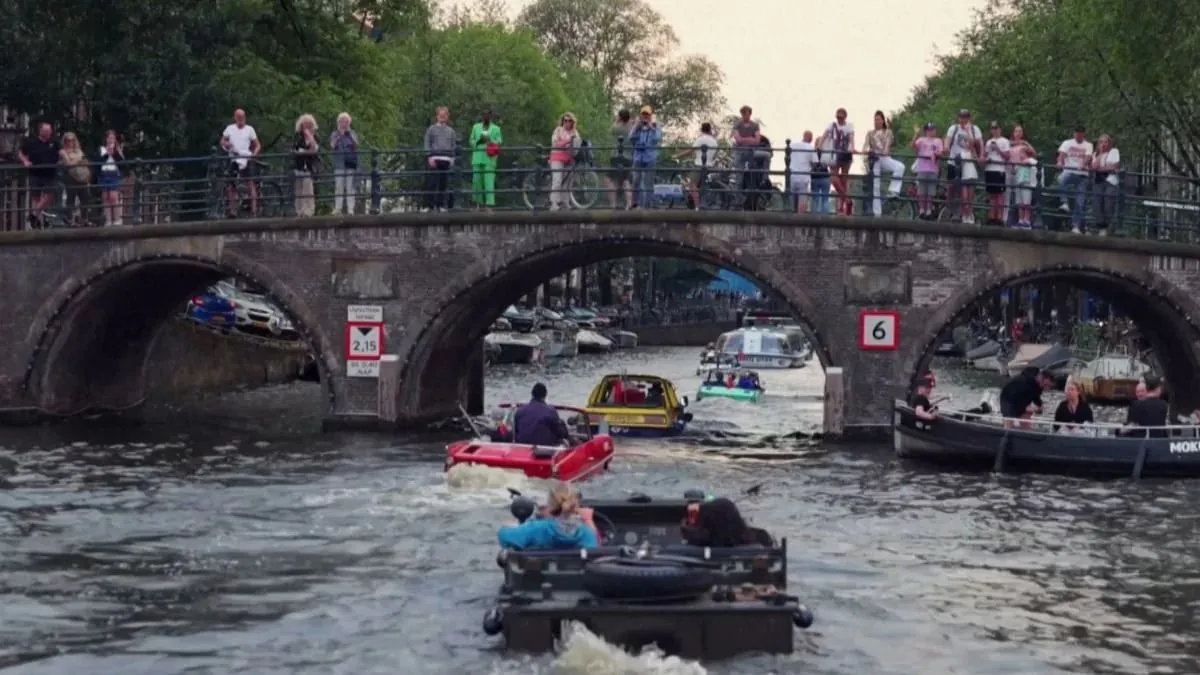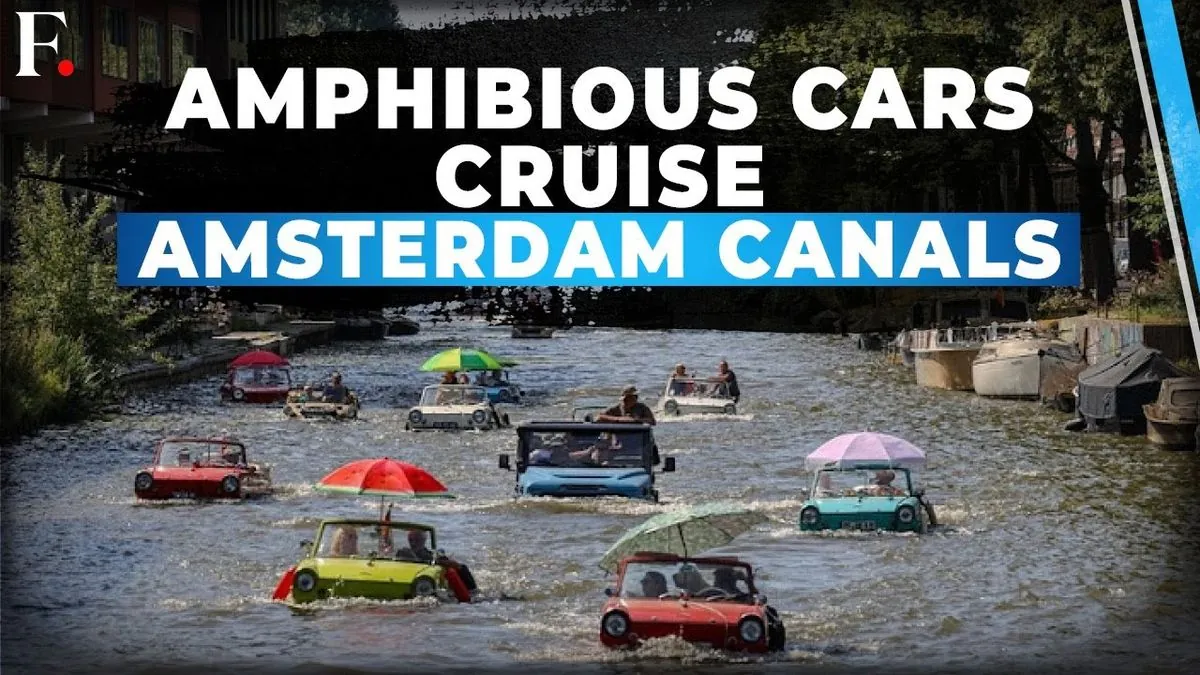Amsterdam Bids Farewell to Amphibious Car Parade Amid Emission Rules
Amsterdam hosts its final amphibious car parade due to new emission regulations. The event, attracting 100 participants this year, will relocate to other cities in the future.

In a bittersweet farewell, Amsterdam's canals witnessed their final amphibious car parade on August 2, 2024. The event, a unique spectacle blending automotive and nautical worlds, has fallen victim to the city's stringent emission regulations set to take effect in 2025.
Roy Bolks, the event organizer, explained the situation: "This year is the last time because Amsterdam will introduce some new rules." These regulations, part of Amsterdam's ambitious goal to become emission-free by 2030, will restrict canal access to zero-emission vessels only.
The parade, which began in 1987, has been a testament to the ingenuity of amphibious vehicle design. While the first amphibious vehicle was invented in 1805 by Oliver Evans, modern iterations like those in the parade face challenges in adapting to electric propulsion. Onno den Boer, a Dutch participant, expressed his understanding yet disappointment: "Everybody has to think about the environment and we understand it, but it's a pity we can't easily turn these cars electric."

The weight of electric batteries poses a significant obstacle for these dual-purpose vehicles. With the heaviest electric car batteries weighing around 1,800 kg, the added mass compromises the amphibious cars' buoyancy and maneuverability in water. This technological hurdle has made electric conversion impractical for most amphibious vehicles.
Despite the end of its run in Amsterdam, the parade's popularity remains undiminished. This year's event attracted 100 enthusiasts, with Bolks noting, "We created a waiting list." The multi-day spectacle, which began on July 29, took participants through Amsterdam's historic canals, part of the city's 100 kilometers of waterways, many of which are UNESCO World Heritage sites.
Looking ahead, the parade will continue its tradition of changing locations. In 2025, it will move to Belgium near Ghent, and future events are planned for Friesland in the Netherlands. This shift aligns with the country's extensive network of over 22,000 km of navigable waterways and 1,000 drawbridges.
As Amsterdam pushes forward with its "Smart Mobility" strategy and the broader Dutch goal of 100% emission-free new car sales by 2030, the amphibious car parade serves as a poignant reminder of the challenges and changes in the transition to sustainable transportation. While the sight of these unique vehicles may no longer grace Amsterdam's canals, their legacy and the spirit of innovation they represent will continue to inspire automotive enthusiasts and environmentalists alike.
"It will take place in Friesland in a few years; it's pretty there."


































